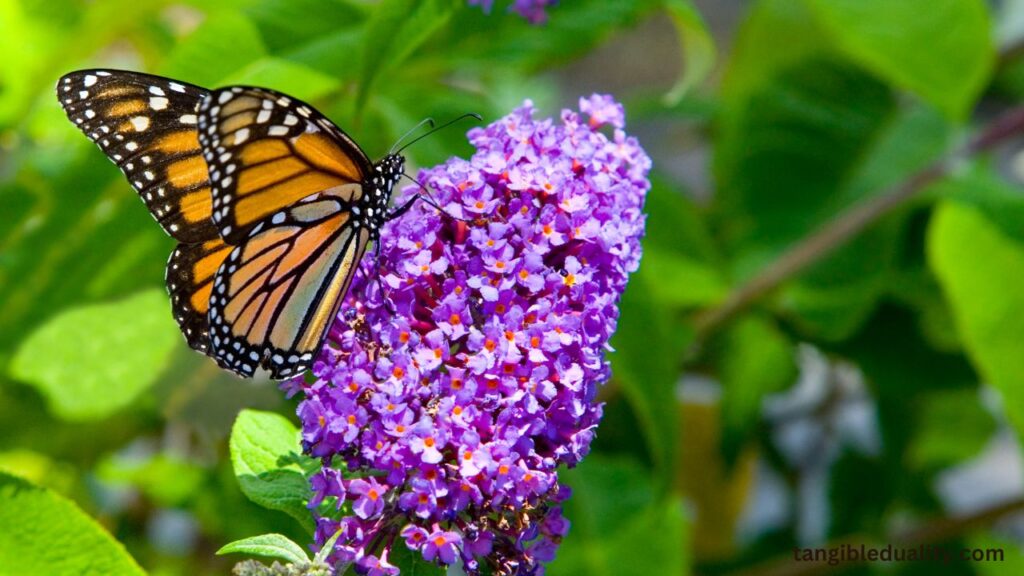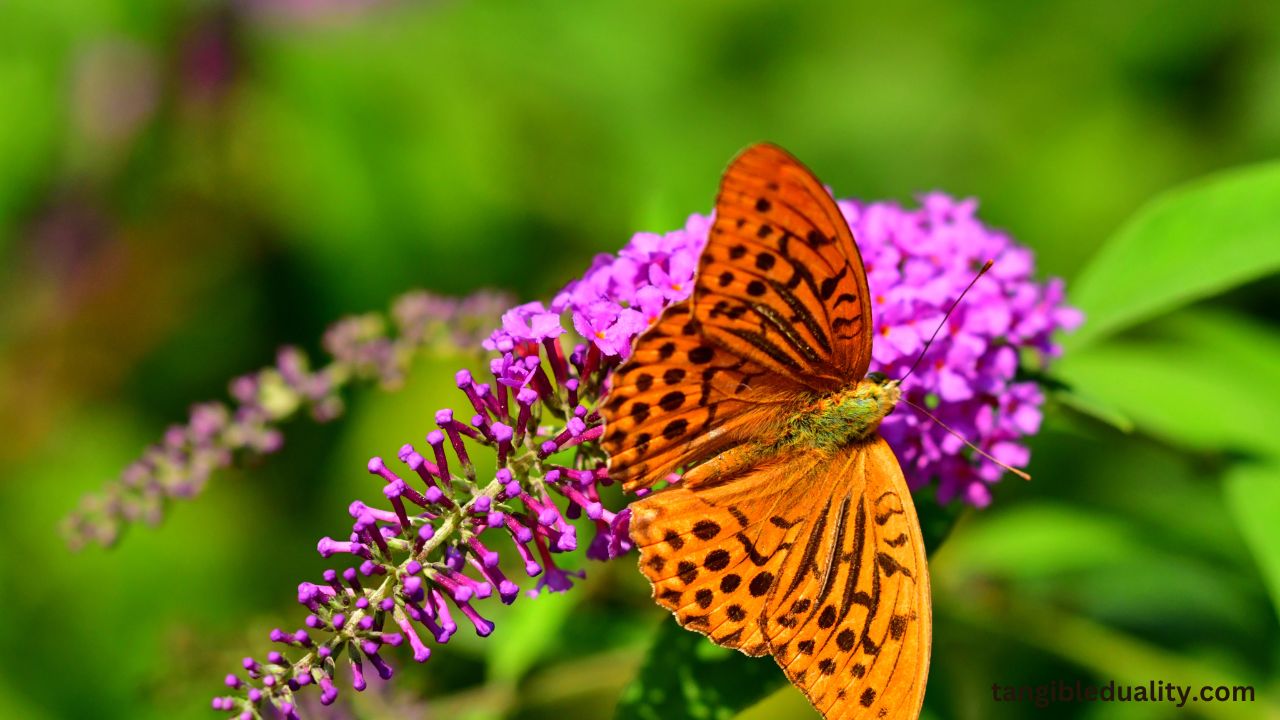Any garden or outdoor space would benefit from adding butterfly bushes, stunning and highly desirable features. Because of their propensity to attract butterflies and their brilliant colors, these plants are a favorite among gardeners who want to add beauty and wildlife to their landscape.
Conversely, cultivating and maintaining butterfly bushes requires a certain level of expertise and careful attention to detail. In this comprehensive tutorial, we will discuss all you need to know to cultivate butterfly bushes properly and perform the necessary maintenance. We will cover all the fundamentals to ensure your butterfly bushes grow and prosper.
This includes selecting the appropriate site and soil conditions and the procedures for watering and pruning it. We will also discuss common problems and pests that may impact your plants and advise you on encouraging healthy development and blooming.
This guide offers you the knowledge and guidance you need to produce beautiful and flourishing butterfly bushes, regardless of whether you are an experienced gardener trying to extend your collection or a beginner interested in adding these charming plants to your garden.
Now is the time to put on your gardening gloves and establish a butterfly refuge in and around your backyard. Butterfly bushes are a lovely addition to gardens and crucial in attracting pollinators such as butterflies and other insects.
This comprehensive tutorial will cover everything you need to know about cultivating and caring for butterfly bushes to guarantee their flourishing in the external environment you created.

About Butterfly Bushes
What is a Butterfly Bush?
A butterfly bush, scientifically known as Buddleia, is a shrub that produces clusters of colorful flowers in cone-shaped spikes. These flowers are beautiful to butterflies, hence the name “butterfly bush.”
Why are Butterfly Bushes Popular in Gardens?
Butterfly bushes are popular in gardens because they attract butterflies and other pollinators, adding movement and life to outdoor spaces. Their vibrant blooms and easy maintenance make them a favorite among gardeners.
What Are the Different Varieties of Butterfly Bushes?
Several butterfly bushes are available, each offering unique flower colors and sizes. Some common varieties include ‘Black Knight,’ ‘Pink Delight,’ and ‘White Profusion,’ providing options for different garden color schemes.
Growing Butterfly Bushes
How to Plant a Butterfly Bush?
To plant a butterfly bush, choose a sunny location with well-drained soil. Dig a hole twice the size of the root ball and backfill with compost for added nutrients. Ensure the bush is planted at the same depth as in the pot.
What are the Sun and Soil Requirements for Butterfly Bushes?
Butterfly bushes thrive in full sun, requiring at least six hours of sunlight daily for optimal growth and blooming. They prefer well-drained soil and benefit from a layer of mulch to retain moisture and suppress weeds.
When is the Best Time to Plant and Grow Butterfly Bushes?
The best time to plant and grow butterfly bushes is in early spring or fall when the weather is mild. This allows the plant to establish its root system before the growing season and ensures robust growth and blooming.
Caring for Butterfly Bushes
How to Prune Butterfly Bushes?
Pruning butterfly bushes is essential to maintain their shape and encourage new growth. Cut back the bushes to the ground in late winter or early spring to promote new wood and ensure abundant blooms in the upcoming season.
What Are the Common Pests and Diseases that Affect Butterfly Bushes?
Spider mites, which can damage the foliage, are pests that may affect butterfly bushes. Inspect the plants regularly and treat them with appropriate measures to prevent infestations. Butterfly bushes are disease-resistant when grown in well-drained soil under proper care conditions.
How to Maintain Healthy Growth and Blooms?
To maintain healthy growth and blooms, provide regular watering during the growing season, especially during dry spells. Feeding the bushes with compost or a balanced fertilizer can enhance their growth and flowering capacity.

Attracting Pollinators with Butterfly Bushes
How Does a Butterfly Bush Attract Butterflies and Other Pollinators?
Butterfly bushes attract butterflies and other pollinators through their fragrant blooms and abundant nectar. You create a welcoming environment for these beneficial insects by planting butterfly bushes in your garden.
What Are Some Companion Plants to Grow with Butterfly Bushes?
Some companion plants complement butterfly bushes, including weeds, native perennials, and other nectar-rich flowers. These plants not only enhance the beauty of your garden but also provide additional food sources for pollinators.
Tips for Creating a Butterfly-Friendly Garden with Butterfly Bushes?
To create a butterfly-friendly garden with butterfly bushes, ensure a variety of nectar-rich flowers are planted to attract a diverse range of pollinators. Incorporating native plants and providing sheltered spots for butterflies to rest will enhance the overall habitat for these winged visitors.
Dealing with Invasive Traits
Are Butterfly Bushes Invasive in Certain Regions?
Butterfly bushes have invasive traits in some regions, spreading quickly and outcompeting native plant species. Gardeners in such areas should consider non-invasive alternatives to prevent environmental damage.
What are the alternatives for gardeners concerned about invasion?
For gardeners concerned about invasiveness, alternative options like native plants or non-invasive shrubs can provide similar benefits without the risk of spreading uncontrollably. Researching local plant species and consulting with garden centers can help select suitable alternatives.
How to Prevent the Spread of Butterfly Bushes?
To prevent the spread of butterfly bushes in sensitive environments, gardeners can cut back the bushes to the root or ground level, removing any potential for new growth. Proper disposal of trimmed branches and flowers can further prevent the unintentional propagation of these plants.
Conclusion
Butterfly bushes are excellent additions to any garden because they produce bright flowers and attract a broad range of butterflies throughout the growing season. This property makes them an excellent choice for any garden.
If you adhere to the fundamental instructions in this article, you can guarantee that your butterfly bushes will maintain vitality and health.
To boost vigorous development and numerous flowerings, remember to provide appropriate sunlight, soil that drains properly, and conduct periodic trimming.
Additionally, to maintain the plant’s good health, it is essential to be aware of any illnesses and pests that may be present and to address any issues as soon as they arise.
Providing your butterfly bushes with care and attention will allow them to flourish and continue to bring you lovely experiences in your outside surroundings for many years. Have a wonderful day gardening!
FAQs
Q: What is a butterfly bush?
A: A butterfly bush, also known as buddleia, is a shrub that is popular for attracting butterflies and hummingbirds to the garden.
Q: How do I care for a butterfly bush?
A: Proper butterfly bush care involves planting it in well-draining soil, pruning it in early spring, and deadheading spent flowers to promote new growth.
Q: Can butterfly bushes survive in cold climates?
A: Butterfly bushes are typically hardy up to zone 5, but in colder climates, they may die back to the ground in winter and regrow in the spring.
Q: What are some varieties of butterfly bushes?
A: Some popular butterfly bush varieties include standard-sized bushes, dwarf varieties, and those with different colored flower spikes.
Q: How do I propagate a butterfly bush?
A: Butterfly bushes can be propagated by taking softwood cuttings in late spring or early summer and using rooting hormone powder before planting in potting soil.
Q: Are butterfly bushes invasive?
A: In some regions, butterfly bushes are considered invasive species as they can self-seed easily and outcompete native plants. Be sure to check local regulations before planting.
Q: How tall can a butterfly bush grow?
A: Depending on the variety, butterfly bushes can grow up to 8 feet tall, making them a striking addition to any garden landscape.
Q: How can I create a butterfly garden with butterfly bushes?
A: To create a butterfly garden, plant butterfly bushes along with other nectar-rich flowers and provide a water source for butterflies to thrive.

